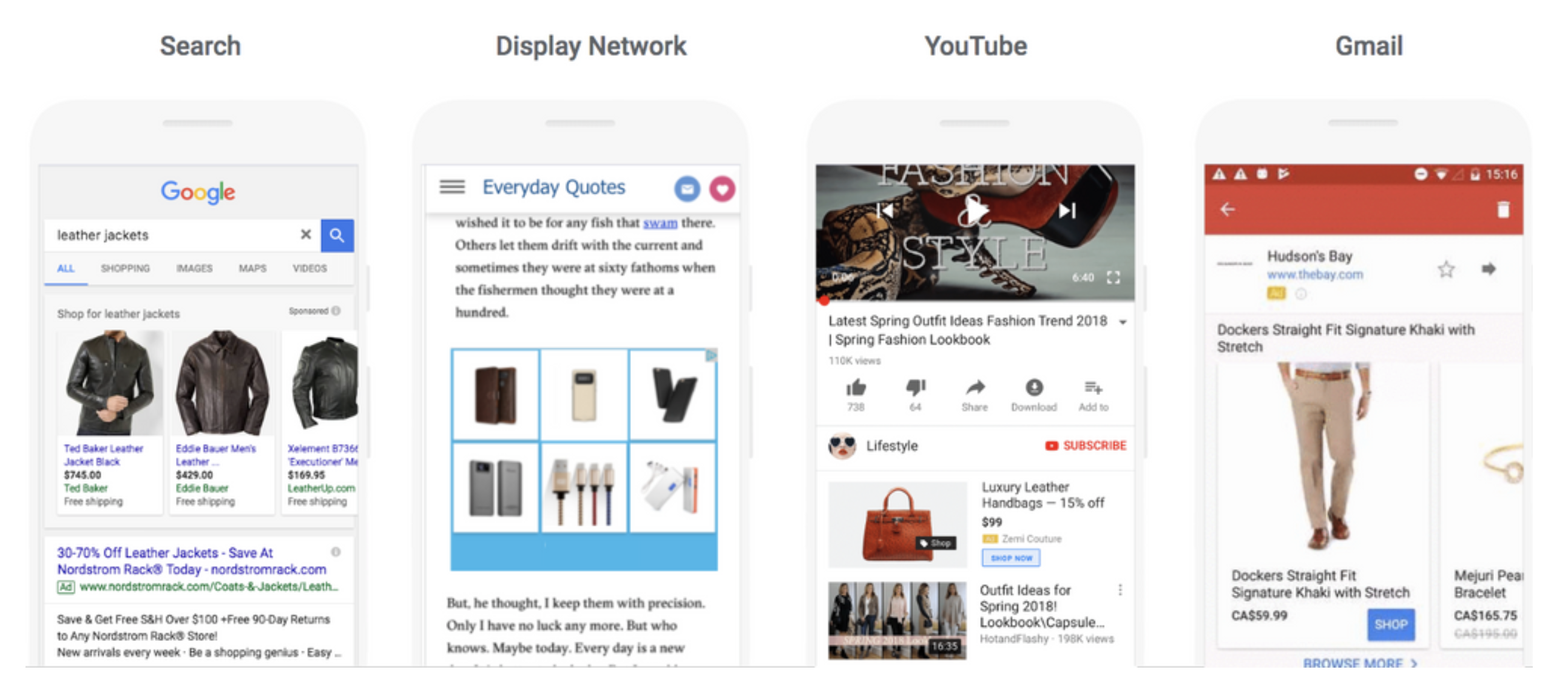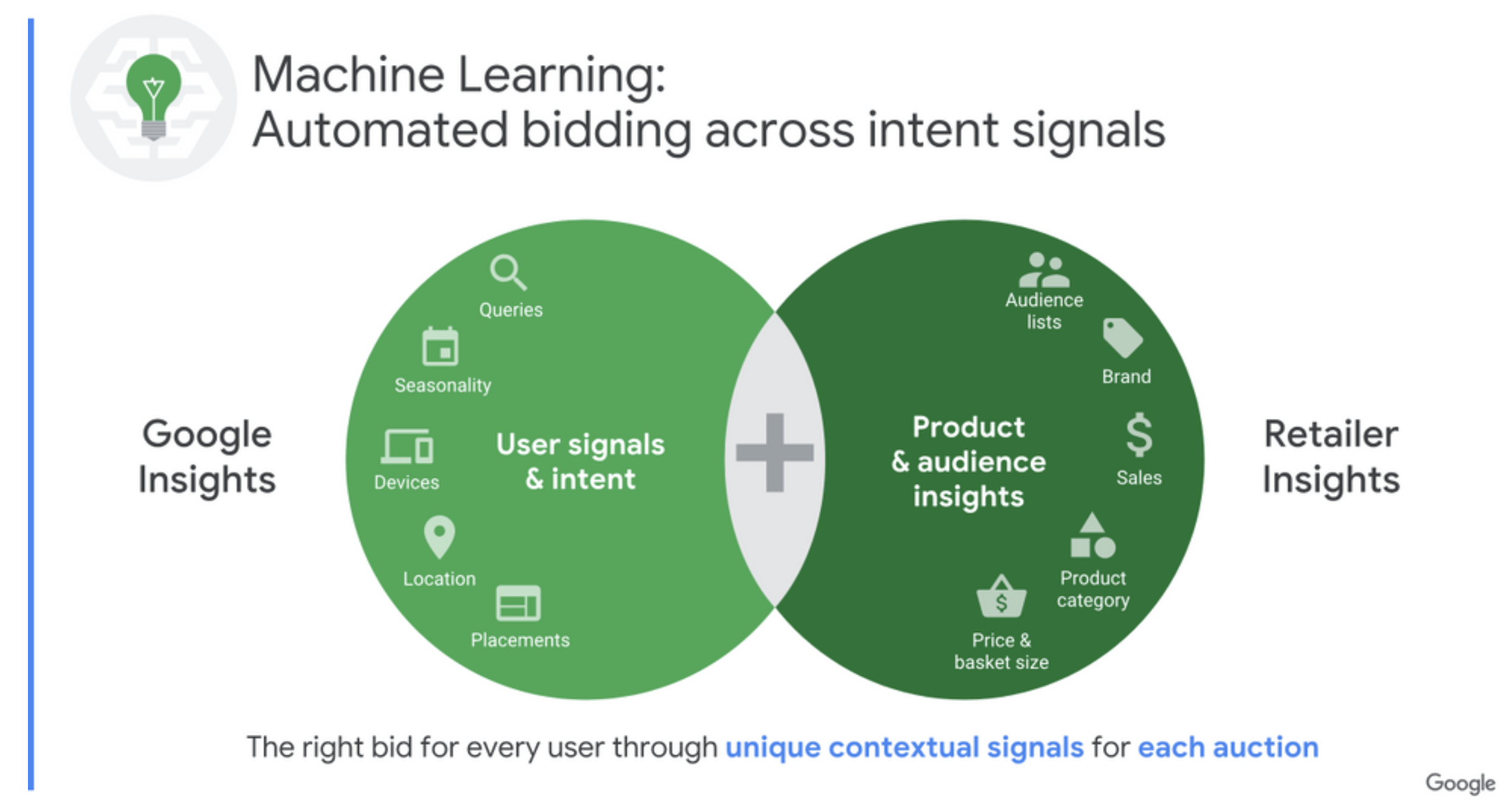Showing up on top of the search results, visually appealing and displaying key product information in one shot, Google Shopping ads proved to be one of the most successful channels for brands to attract valuable consumers online at the very spot where most of them start looking for the products they want.
Beginning of 2018, it was reported that Google Shopping ads were driving 76.4% of retail search ad spend in the US, and 82% in the UK – accounting for more than 85% of clicks on Google ads between January and February 2018. Today, Google Shopping is a clear must for retailers aiming at boosting their online sales. For this reason, we expect this format to become even more competitive and more time- & resource-consuming in terms of optimization.
This is where Smart Shopping comes in. This new shopping ad format is leveraging the power of Google’s machine learning to automate your bidding and ad placement across the broader Google network and to optimize to get you the most value within your defined budget.
What is Smart Shopping and how does it work?
Smart Shopping is the latest Google shopping ad format that uses machine learning to completely automate your campaign. It lets the Google’s algorithm optimizing your bids, creatives and placements in order to maximize your conversion value at your given budget.
That way, this smarter format allows you to save time in campaign management, optimizes automatically towards your objectives (maximum revenue) and increases your reach by showing your best performing ads across different Google networks including the Google Search Network, the Google Display Network, YouTube, and Gmail.

Practically, it combines under one campaign 3 types of Google ad formats that you might have already used :
- Standard shopping ads based on user’s search queries and your product feed
- Dynamic remarketing based on which products users have seen on your website and your product feed
- Static display remarketing targeting the users who have been to your website but haven’t yet expressed interest in a specific product. It will be based on the assets you will upload to set-up the campaign.
Unlike standard shopping, Smart Shopping uses the available budget as a starting element and intends (by testing & learning) to maximize your conversion value within that specific budget. Consequently, it will not be constrained due to budget limit and instead it will adjust your bidding based on various signals in order to maximize your return taking into account that threshold.
See below the set of signals Google’s machine learning system will take into account:

In the end, automation will help in a more efficient way to show the right product at the right time to consumers who are more likely to convert and spend more.
Performance - More than 20% increase in revenue on average
Based on Google data, advertisers using Smart Shopping campaigns have seen on average a more than 20% increase in revenue for the same cost. Based on our clients who started using Smart Shopping, we also observe similar positive trends in performance with a significant increase in revenue and decreasing CPA for a stable investment.
Conclusion
Shopping is today one of the most performing and most-used paid channels for retailers in order to increase their online sales & revenue. New Google Smart Shopping format offers a much more efficient way to manage your shopping campaigns. By leveraging Google’s machine learning and automation, it automatically optimizes your bidding, creatives and placements to meet your goal and maximize your revenue within your chosen budget. It saves you time, increases your reach across Google networks and is already showing great performance uplift compared to standard formats. Ready to test it ? You will find more details on how to set-up Smart Shopping campaign in our second article.



